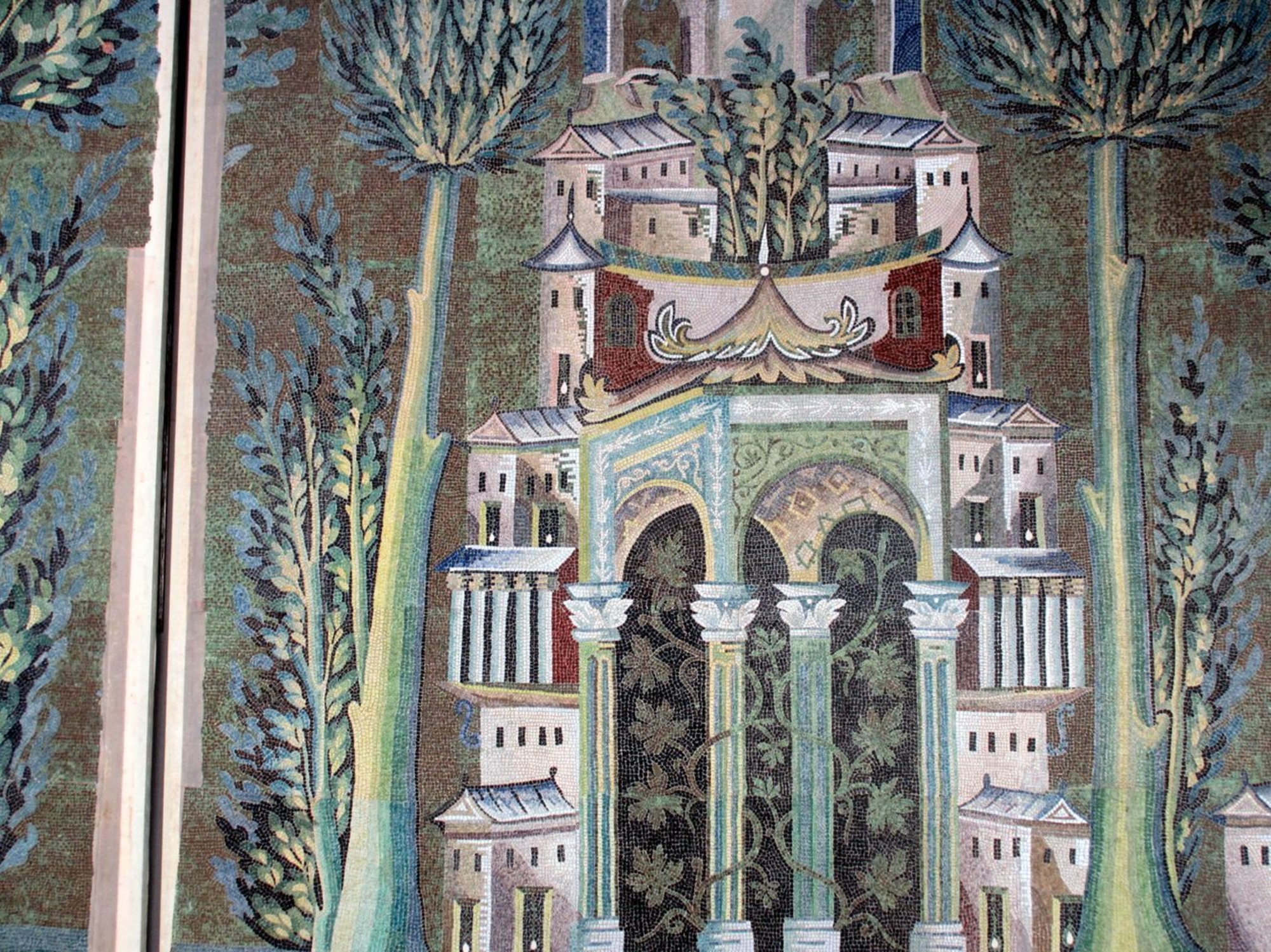- Home
- The mosaic decoration
- Mosaics: an art of colour
- Making tesserae
Varied materials
The basic unit of a mosaic, the tessera is a small cube approximately one centimetre square. It can be made from a variety of materials including glass, stone and terracotta. Glass tesserae were almost always used for wall mosaics. More fragile than stone, they nonetheless offered a much broader colour palette than other materials. Mother-of-pearl tiles have been found in certain parts of the great mosque. These small drop-shaped tiles were used to depict lamps hanging between the arches of buildings, and stylised fruit.
Small glass cubes
Tesserae were cut from coloured glass cakes. Glassmaking was already well-established in the Mediterranean by the 8th century. Glass was traded in the form of ingots, most often untinted, and made in large quantities by specialised workshops. At the end of the production chain, glass craftsmen melted the ingots and coloured them as required using metal oxides. Syria was renowned for its glassmaking expertise and it is very likely the cakes were made locally.
Gold and silver
Gold and silver tesserae were used for mosaics in the Umayyad great mosque: gold for backgrounds and silver mixed with white, blue and turquoise for water.
Gold and silver tesserae were made from a fine sheet of metal sandwiched between two layers of glass, of which the top layer was very thin. Recent physicochemical tests have shown that the metal used to make golden tesserae came from gold coins, confirming what we already know from ancient texts.
